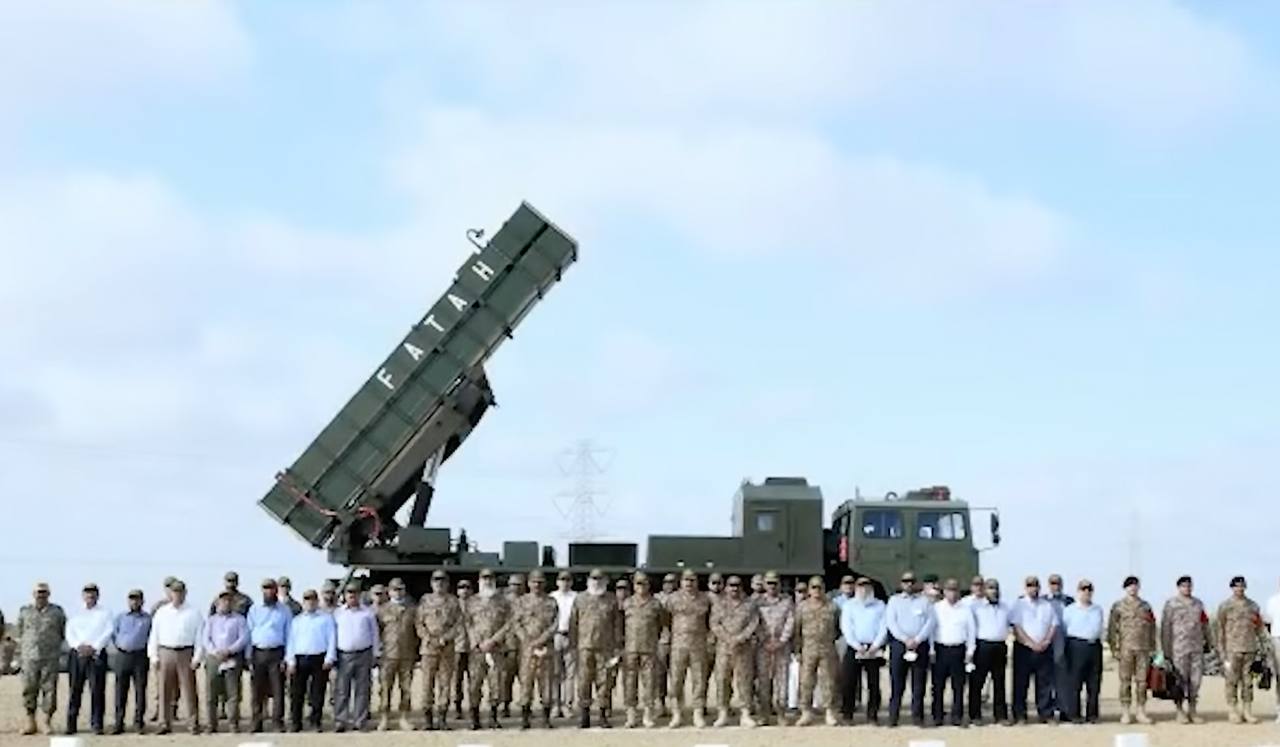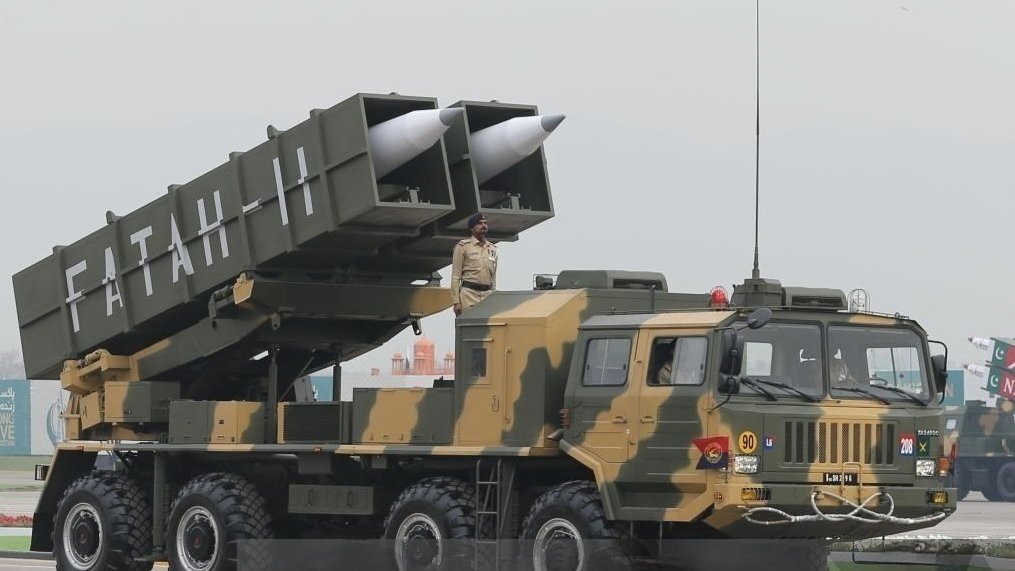(VIDEO) Pakistan Unleashes ‘Operation Bunyan ul Marsoos’ in Massive Counterstrike After Indian Missile Barrage
The Pakistani campaign marks one of the most extensive and coordinated military responses by Islamabad in over two decades, raising alarm across the region and drawing renewed attention to the precarious balance of power between two nuclear-armed neighbours.
(DEFENCE SECURITY ASIA) — After several days of calibrated restraint aimed at providing a window for diplomacy, Pakistan’s armed forces have launched a sweeping counteroffensive codenamed “Bunyan ul Marsoos”—a term meaning “Unbreakable Walls”—in direct response to India’s wide-ranging kinetic campaign under Operation Sindoor.
The Pakistani campaign marks one of the most extensive and coordinated military responses by Islamabad in over two decades, raising alarm across the region and drawing renewed attention to the precarious balance of power between two nuclear-armed neighbours.
The counterstrike was swiftly followed by Prime Minister Shehbaz Sharif convening an emergency meeting of the National Command Authority (NCA), the apex civil-military body that oversees command, control, and deployment of Pakistan’s nuclear arsenal—signalling Islamabad’s readiness to recalibrate its deterrence posture if necessary.
Operation Bunyan ul Marsoos was initiated after Indian forces reportedly launched a salvo of stand-off munitions and missile strikes against four Pakistani airbases, including the Pakistan Army’s General Headquarters (GHQ) and the strategically critical Noor Khan Airbase in Rawalpindi—a city that also houses key defence infrastructure and the residences of Pakistan’s military leadership.
India’s deep-strike campaign reportedly caused damage to the airbase complex, with unverified reports suggesting the destruction of multiple PAF C-130 Hercules aircraft—claims the Pakistani military has categorically denied, while stating that most incoming threats were neutralised by its integrated air defence network.
Speaking to the press, Pakistan’s military spokesperson, Major General Ahmad Sharif Chaudhry, emphasized that “a majority of Indian missiles were intercepted,” highlighting the robustness of Pakistan’s layered surface-to-air missile defences, which include Chinese-origin HQ-9 systems, indigenous LY-80 medium-range SAMs, and radar-based counter-drone assets.
The airstrikes also triggered civilian panic in the densely populated Rawalpindi- Islamabad corridor, with footage circulating online showing residents fleeing their homes amid the echoes of explosions—underscoring the proximity of military installations to civilian areas and the risks of collateral escalation.
(Visual of long-range Fateh rocket launch by the Pakistani military)
India’s offensive reportedly extended beyond Rawalpindi, with strikes conducted on PAF airbases in Shorkot and Mureed, timed just hours after India deployed a swarm of kamikaze drones in a cross-border operation that analysts described as the largest UAV-based aerial incursion in South Asian history.
According to Pakistan’s Inter-Services Public Relations (ISPR), more than 400 drones were launched by Indian forces—an unprecedented use of loitering munitions and drone swarms in the subcontinent—prompting a retaliatory barrage from Pakistan’s own unmanned systems and rocket forces.
In retaliation, Pakistan’s military targeted high-value Indian military sites, including the Pathankot Airbase—previously attacked by militants in 2016—and a BrahMos cruise missile storage facility in Punjab, dealing what appeared to be precision hits based on satellite-guided strike packages.
Viral footage from the area showed intense fires and secondary detonations at the suspected BrahMos site, possibly indicating munitions cook-off, a tell-tale sign of successful strikes on ammunition or missile storage complexes.
The strike on BrahMos missile storage facility in Punjab triggered massive secondary explosions and fires, indicating a likely direct hit on one of India’s most sensitive high-value military stockpiles.
The Pakistani counterattack reportedly extended to Indian-administered Kashmir, where airbases in Udhampur and Srinagar were hit by salvos of rockets and long-range guided munitions, with residents reporting continuous blasts and anti-aircraft fire throughout the night.
(Visual of the Chinese-made SH-15 self-propelled howitzer operated by the Pakistani military)
With much of Indian Punjab, Haryana, and Jammu & Kashmir placed under high alert, local authorities have implemented blackout orders, imposed curfews, and advised civilians to seek shelter—pointing to the gravity of the unfolding military crisis.
Crucially, the Pakistani retaliation featured the operational debut of the Fateh-1 precision-guided artillery rocket system—a domestically developed long-range system with a strike range of up to 140 km and sub-50 meter Circular Error Probable (CEP), designed for rapid, standoff strikes on enemy infrastructure.
Equipped with GPS/INS navigation, the Fateh-1 system can deliver high-explosive or submunition warheads with pinpoint accuracy, and is mounted on mobile launchers designed for “shoot-and-scoot” operations—giving Pakistani rocket forces enhanced survivability against Indian counter-battery systems.
The use of Fateh-1 rockets reflects Islamabad’s doctrinal emphasis on deterrence-by-punishment and its pursuit of low-cost, high-precision strike options in any conventional exchange short of full-scale war.
Integrated into the army’s broader Multiple Launch Rocket System (MLRS) strategy, the Fateh-1 provides Pakistan with a flexible, scalable firepower option against both fixed and mobile enemy targets, including airbases, logistics depots, and forward-operating command centres.


This escalation now pushes the South Asian security architecture into uncharted territory, where conventional exchanges are being increasingly shaped by the integration of precision-guided munitions, long-range fires, unmanned platforms, and advanced ISR capabilities.
Strategists warn that any further exchange could dangerously tip into a broader regional conflagration, especially as both countries possess second-strike nuclear capabilities and growing satellite reconnaissance and missile early warning infrastructure.
India’s recent adoption of Rafale multirole fighters, coupled with Pakistan’s operational deployment of the J-10C equipped with China’s PL-15 Beyond Visual Range missiles, has added a new layer of airpower competition—one where detection, first-launch capability, and electronic warfare supremacy may determine the course of future battles.
As missile smoke clears over Punjab and Kashmir, the world now watches with bated breath as two rival powers teeter on the edge of a catastrophic spiral—one that could redefine regional security and challenge the credibility of global non-proliferation efforts.
— DEFENCE SECURITY ASIA


